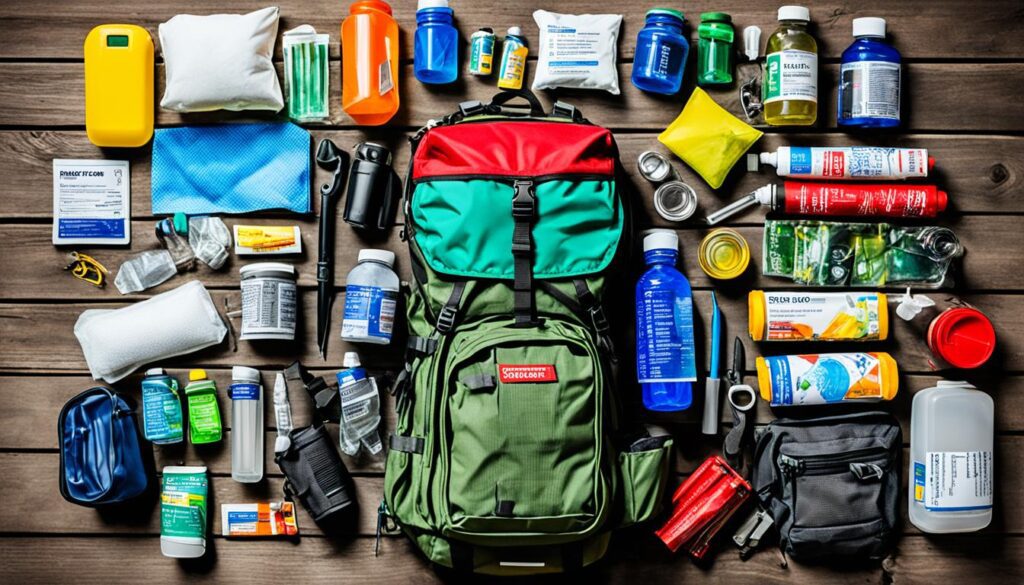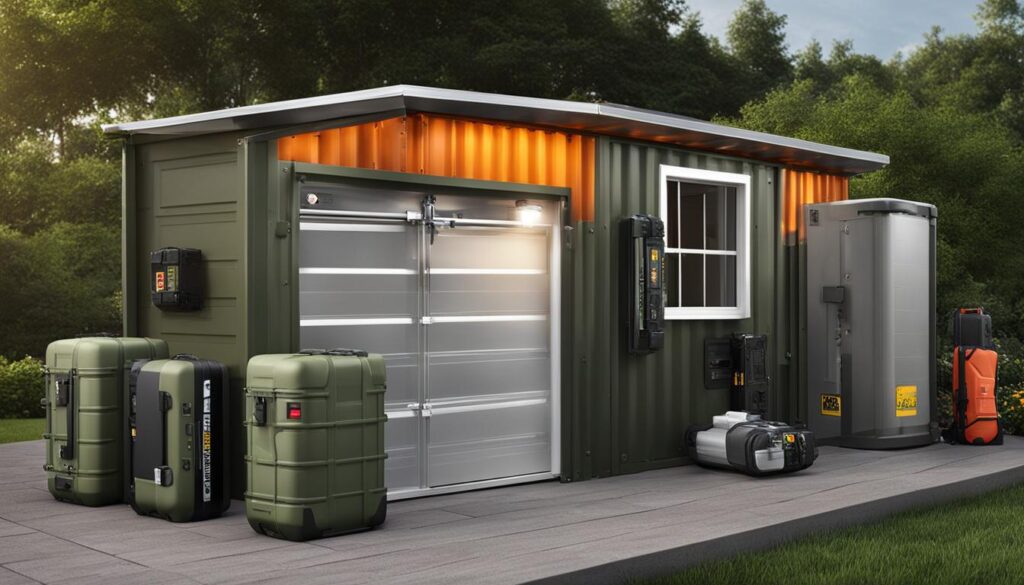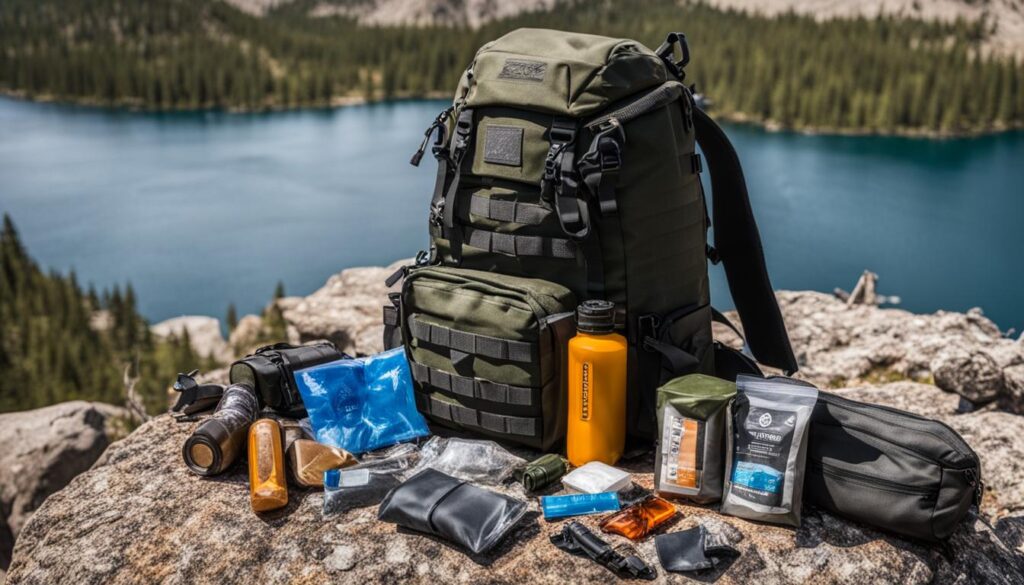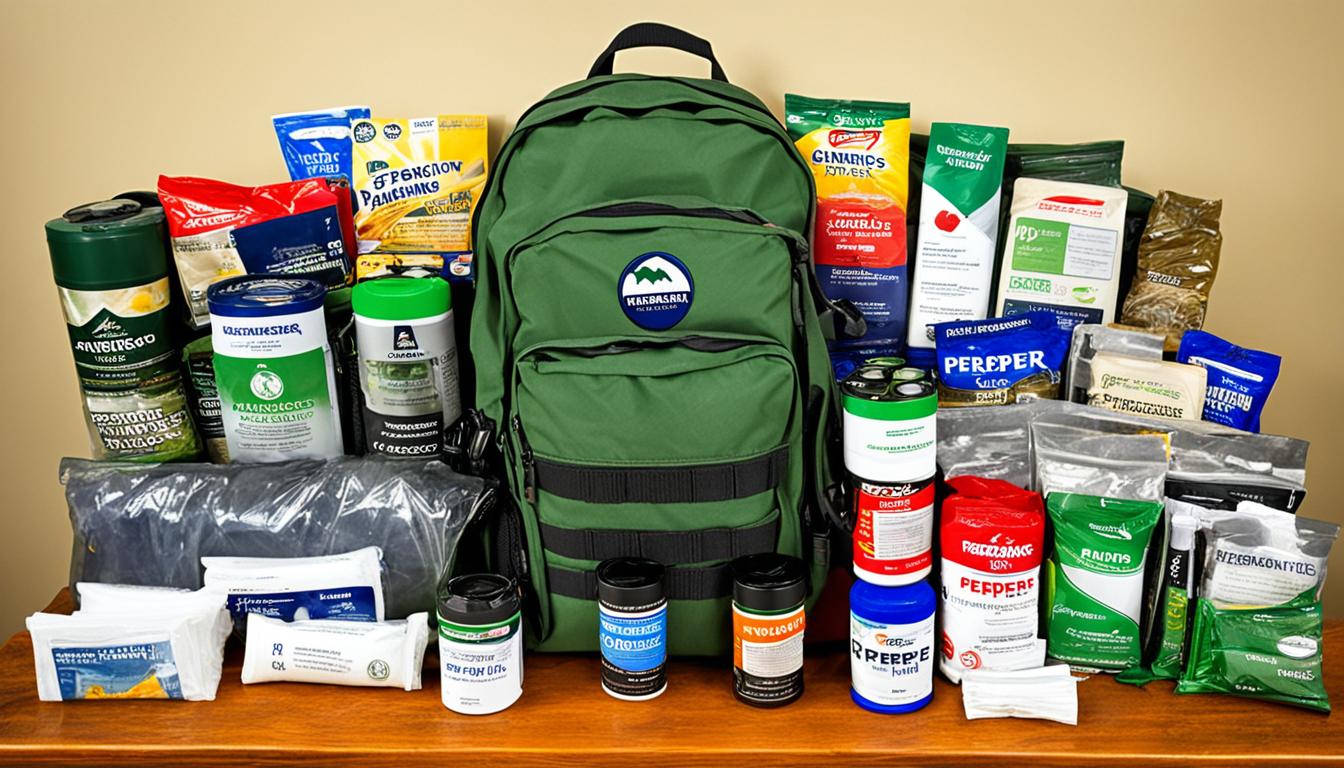Being prepared for any crisis is essential to ensure you and your family’s safety and well-being. In order to be ready for an emergency, it is important to have the necessary prepper supplies on hand.
These supplies include emergency kits, survival gear, and other essential items that can help you endure and overcome any disaster or crisis situation. By having these prepper supplies readily available, you can ensure that you and your loved ones are prepared for any eventuality.
Building Your Emergency Kit
An emergency kit is the cornerstone of any prepper’s supplies. It is a collection of basic items that your household may need in the event of an emergency. The basic disaster supplies should include:
- Water (one gallon per person per day)
- Non-perishable food
- A battery-powered or hand crank radio with a NOAA Weather Radio
- A flashlight
- A first aid kit
- Extra batteries
- A whistle for signaling for help
- Dust masks for filtering contaminated air
- Plastic sheeting and duct tape for sheltering in place
- Moist towelettes and garbage bags for sanitation
- A wrench or pliers to turn off utilities
- A manual can opener for food
- Local maps
- A cell phone with chargers and backup battery
- Additional emergency supplies based on your individual needs such as soap, medications, infant formula, and pet food
It is important to regularly check and maintain your emergency kit, replacing expired items as needed and updating it according to your family’s changing needs.
| Disaster Supplies | Quantity |
|---|---|
| Water (one gallon per person per day) | 3 gallons per person |
| Non-perishable food | 3-day supply per person |
| Battery-powered or hand crank radio | 1 |
| Flashlight | 1 |
| First aid kit | 1 |
| Extra batteries | Multiple sets |
| Whistle | 1 |
| Dust masks | 2 per person |
| Plastic sheeting | 1 roll |
| Duct tape | 1 roll |
| Moist towelettes | 2 packs |
| Garbage bags | 2 bags |
| Wrench or pliers | 1 |
| Manual can opener | 1 |
| Local maps | 1 set |
| Cell phone with chargers and backup battery | 1 |
Remember, having a well-stocked emergency kit is crucial for your family’s safety and preparedness during unexpected situations.

Getting Your Home Ready
In addition to having an emergency kit, it is crucial to prepare your home for emergencies. By taking proactive steps to enhance your home’s preparedness, you can create a safer environment for you and your loved ones.
One essential aspect of home preparedness is ensuring a safe and consistent water supply. Having a reliable water filtration system can help ensure that you have access to clean, drinkable water during emergencies. Alternatively, you can store water in airtight containers to have an adequate supply on hand.
Another important element of home preparedness is having the right tools to handle potential fire hazards. A fire extinguisher is a crucial safety device that can help you quickly and effectively extinguish small fires. It is essential to have a fire extinguisher in easily accessible locations throughout your home.
Smoke detectors are also vital for early fire detection. These devices can alert you and your family to the presence of smoke, allowing for swift action and evacuation if necessary. Regularly check and replace batteries in your smoke detectors to ensure they are functioning properly.
Developing an Emergency Exit Plan
Having an emergency exit plan and practicing it with your family can greatly increase your chances of safely escaping any emergencies that may occur. Ensure that everyone in your household knows the primary and secondary escape routes from each room in your home.
Designate a meeting point outside the home where everyone can gather after evacuating. A clear and well-communicated plan can help reduce panic and confusion during stressful situations.
Remember to review and update your emergency exit plan regularly, especially if there are any significant changes to your home’s layout or family composition.
By investing time and effort into getting your home ready for emergencies, you can enhance your overall preparedness and ensure the safety of yourself and your loved ones. Take the necessary steps to improve your home’s water supply, fire safety measures, and emergency exit plan to be better prepared for any crisis that may arise.

Bug Out Bags and Everyday Carry
Bug out bags (BOBs) and everyday carry (EDC) items are crucial components of emergency preparedness. These portable kits and essential tools can provide you with the necessary resources and personal protection to navigate and survive during emergencies and crisis situations.
Bug Out Bags (BOBs)
Bug out bags, also known as 72-hour kits, are designed to sustain you for at least 72 hours in the event that you need to evacuate your home quickly. These bags should contain a carefully curated selection of items to meet your basic needs during an emergency.
- Food: Choose non-perishable, high-calorie food items that provide necessary sustenance.
- Water: Include water packets or water purification tablets to ensure a safe drinking water supply.
- Clothing: Pack appropriate clothing for the weather conditions in your area.
- Shelter: A lightweight and compact emergency shelter, such as a tarp or emergency blanket, can provide protection from the elements.
- Tools: Essential tools such as a multi-tool, a pocket knife, a whistle, and a flashlight should be included for various tasks and signaling for help.
- Personal Protection: Don’t forget personal protection items like a first aid kit, a dust mask, and a personal defense tool such as pepper spray.

| Bug Out Bag Checklist | Quantity |
|---|---|
| Food (non-perishable) | Enough for 72 hours |
| Water packets or purification tablets | At least 3 days’ supply |
| Weather-appropriate clothing | 1 full change of clothes |
| Emergency shelter (tarp, emergency blanket) | 1 |
| Multi-tool | 1 |
| Pocket knife | 1 |
| Whistle | 1 |
| Flashlight | 1 |
| First aid kit | 1 |
| Dust mask | 1 |
| Personal defense tool (pepper spray) | 1 |
Everyday Carry (EDC) Items
Everyday carry items are your daily companions, always with you to address unexpected situations. These tools can be small and compact, fitting easily into your pockets or a small bag.
- Multi-tool: A versatile tool that combines multiple functions such as pliers, screwdrivers, and a knife.
- Flashlight: A compact flashlight can provide illumination in darkness or emergencies.
- Pocket Knife: Useful for various tasks and potential self-defense if needed.
- Whistle: A loud whistle can attract attention and serve as a signal for help.
- Other Small Tools: Consider including additional tools like a mini pry bar, a keychain multitool, or a tactical pen based on your individual needs and preferences.
Having bug out bags and everyday carry items ensures you’re prepared for unexpected situations, no matter where you are. These essentials can significantly increase your readiness and ability to handle emergencies, providing you and your loved ones with peace of mind.
Conclusion
Disaster readiness and emergency preparedness are essential for the safety and well-being of yourself and your loved ones. By having the necessary prepper supplies, such as emergency kits and survival gear, you can be fully prepared to face any crisis or disaster. Throughout this article, we have discussed the importance of building an emergency kit, making your home ready, and having bug out bags and everyday carry items.
Building your emergency kit is the first step in disaster preparedness. It should include essential items like food, water, first aid kits, and communication devices. Regularly checking and maintaining your emergency kit is crucial to ensure that all items are up to date and in working condition.
Getting your home ready involves taking steps to secure a safe water supply, having fire extinguishers and smoke detectors in place, and developing an emergency exit plan. These measures will enhance the safety of your home during emergencies.
Bug out bags and everyday carry items are essential for immediate evacuation or navigating through crisis situations. Bug out bags should contain items like food, water, shelter, and personal protection, while everyday carry items can provide tools for various situations you may encounter.
By following these steps and taking the time to gather the necessary supplies, you can have peace of mind knowing that you are prepared for any emergency that may come your way. Remember, disaster readiness and prepper supplies play a crucial role in emergency preparedness. Stay safe and stay prepared!
FAQs
What should I include in my emergency kit?
Your emergency kit should include basic disaster supplies such as water, non-perishable food, a radio, flashlight, first aid kit, extra batteries, a whistle, dust masks, plastic sheeting and duct tape, moist towelettes and garbage bags, a wrench or pliers, a manual can opener, local maps, a cell phone with chargers and backup battery, and additional items specific to your family’s needs.
How often should I check and maintain my emergency kit?
It is important to regularly check and maintain your emergency kit. Replace expired items as needed and update it based on your family’s changing needs. It is recommended to review your kit every six months to ensure it is up to date.
What can I do to prepare my home for emergencies?
To prepare your home for emergencies, ensure a safe and adequate water supply by having water filtration systems or storing water in airtight containers. Install fire extinguishers and smoke detectors, develop an emergency exit plan, and practice it with your family.
What are bug out bags and why are they important?
Bug out bags (BOBs) are portable kits that contain essential items to sustain you for at least 72 hours. These bags are designed to be grabbed quickly in the event that you need to leave your home in a hurry. They include items like food, water, clothing, shelter, tools, and personal protection items. Bug out bags are important because they ensure you have necessary supplies readily available in case of evacuation or emergencies.
What are everyday carry items?
Everyday carry (EDC) items are those that you carry with you on a daily basis. They can include a multi-tool, flashlight, pocket knife, whistle, and other small tools that can be helpful in various situations. Having everyday carry items can significantly increase your preparedness and ability to navigate and survive during emergencies.









